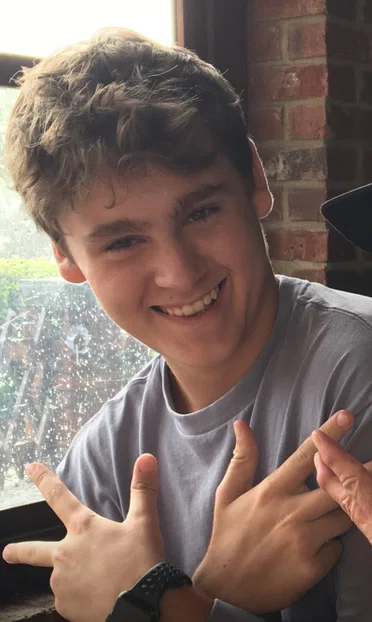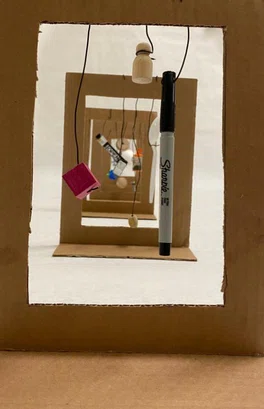





3-D Design
Bennett Henjees
Dorman High School|Roebuck, South Carolina

Untitled|34 x 23 x 239 in.
Material(s): frames, found objects=pieces, string, and wire=holding objects, flashlight = shadow
Process(es): hanging found objects onto frames and using them to project a figure of shadow through the frames.
Curatorial Note: Manipulations of light forms. Various objects and glass are used to experiment with light and shadows.


“My sustained investigation is based on the refraction and manipulation of light. I chose this because I enjoy experimenting with the manipulation of light forms and wanted to investigate how I could create 3-D forms and alter them with light to create larger 3-D spaces of shadow and light.”

Student statement
Student
statement
This project was very experimental and taught me a lot about trial and error in the creative process. Through working on these pieces, I was faced with many decisions to make while figuring out the best way to capture perspective when manipulating light and shadows.
In these pieces, I made multiple three-dimensional works that come together to form a final piece that is two-dimensional. I chose to do this because many three-dimensional artists start their works by making multiple two-dimensional sketches to plan their final three-dimensional object. While watching all of my classmates start their projects this way I realized that in many areas of life I tend to do things differently than those around me and art is a perfect way to visually express that. In my works, I am doing the opposite of what many three-dimensional artists do, I am making multiple three-dimensional works that are then creating one two-dimensional piece.
This has taught me that just because people may do things in another way or start backward doesn't make them wrong or unsuccessful. This AP Art and Design experience was very eye-opening, and I have a deeper appreciation for art in general after making these works. In the beginning, I thought these works would be small and fast, but I was wrong. These works took way longer than I anticipated, and the largest one was around 20 feet long. My biggest takeaway from this project is that everyone has their own perspective of what is being depicted in the two-dimensional work. These differences in perspective were due to where a person is standing but also where the light was positioned. Throughout this process, it became more and more apparent that everyone sees the final piece differently just because we all think differently. However, no one is wrong about what they see just because it is different, and no single creative process is wrong just because it is different.
In these works, I used wooden frames, fishing line, and wire. The wire and fishing line allowed me to hook three-dimensional objects to the frame and organize them in a way that the light could shine through many filter-like works to make the final shadow at the end. I started with prototypes to get an idea of how I wanted everything placed, and through many trials and tests, I made my final works.
The best advice I could give to future AP students would be:
Trust yourself but don't push away other perspectives but use them as building blocks. This is true in art as well as in life.

Bennett Henjes

I pulled photos from my piece and talked about how i made it and the idea behind it
13 x 8 x 71 in.
Material(s): cardboard=frames,white paper=backdrop, found objects, and a flashlight= shadows
Process(es): this an experimental piece for si 8 seeing overall how it would perform and what I could change.

Material(s): cardboard=frames, random found objects, light=shadow and white paper=backdrop.
Process(es): Organizing cardboard frames and organized the hanging objects to project a object or person.


Bennett Henjees














